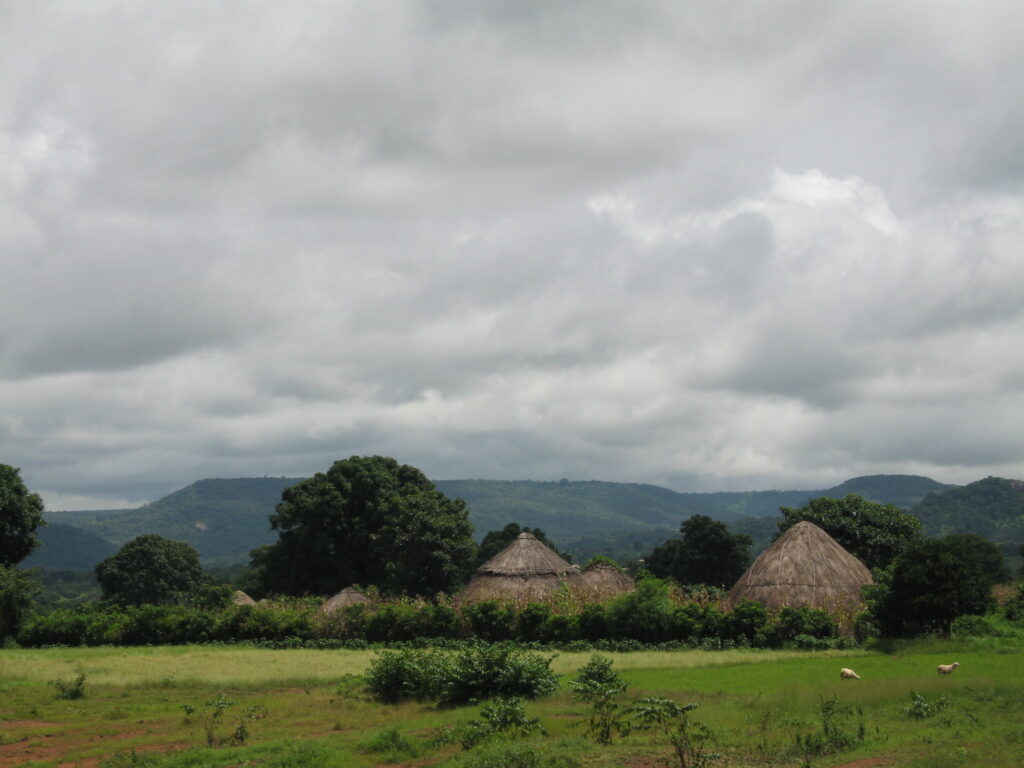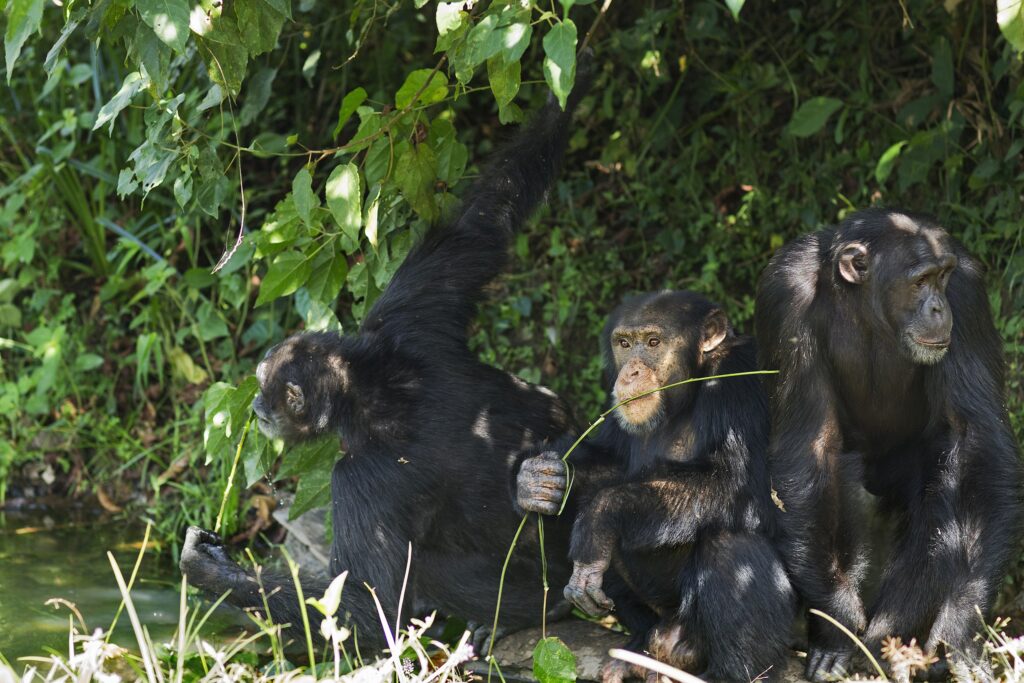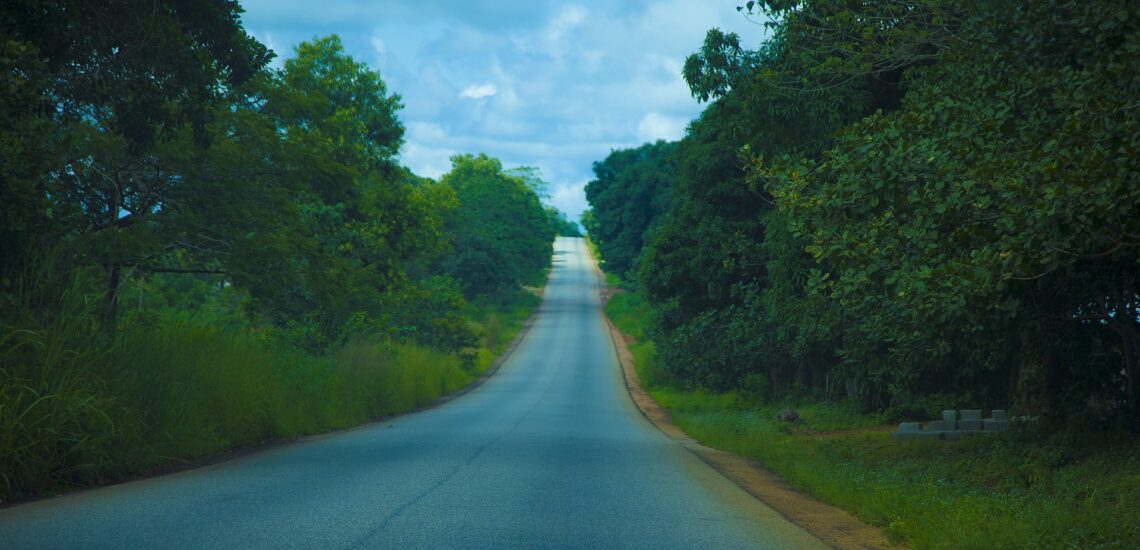Quick facts about Guinea:
- Population: Approximately 14.9 million people.
- Capital: Conakry.
- Official Language: French.
- Other Languages: Numerous indigenous languages, including Susu, Maninka, and Fulfulde.
- Currency: Guinean franc (GNF).
- Government: Unitary presidential republic.
- Major Religion: Islam, with small Christian and indigenous belief communities.
- Geography: Located in West Africa, bordered by Guinea-Bissau to the southwest, Senegal to the northwest, Mali to the northeast, Ivory Coast to the southeast, and Liberia and Sierra Leone to the south. Guinea features a diverse landscape that includes coastal areas, mountainous regions, and fertile plains.
Fact 1: It’s just Guinea, and there are 4 countries like that in the world
Guinea is one of the countries that share its name with a geographical feature, in this case, the Gulf of Guinea. There are indeed a few countries that have “Guinea” in their names, which can be somewhat confusing. The four countries commonly referred to in this context are:
- Guinea (often referred to as Guinea Conakry, named after its capital, Conakry).
- Guinea-Bissau, which is to the south of Guinea.
- Equatorial Guinea, located further to the west on the continent, near the Gulf of Guinea.
- Papua New Guinea, which is located in the southwestern Pacific Ocean.
All four countries have “Guinea” in their names, which derives from the term used historically to refer to the region of West Africa. Each of these countries has distinct cultures, histories, and geographic features, but the shared name can sometimes lead to confusion.

Fact 2: Guinea has poor air quality
Guinea faces challenges regarding air quality, primarily due to factors such as urbanization, industrial activities, and the use of biomass for cooking and heating. In urban areas, especially the capital city, Conakry, air pollution is exacerbated by vehicle emissions, inadequate waste management, and construction activities.
Air quality issues can significantly impact public health, leading to respiratory problems and other health concerns among the population. Additionally, the use of charcoal and firewood for cooking, which is common in many households, contributes to indoor air pollution.
Fact 3: Chimpanzee tool use has been recorded for the first time in Guinea
Guinea is significant in the study of chimpanzee behavior, particularly in the observation of tool use. In the early 2000s, researchers documented tool use among chimpanzees in the Loango National Park in Guinea. These observations were groundbreaking as they provided evidence of chimpanzees using tools in the wild, a behavior previously seen primarily in captivity or in specific locations.
The types of tools used by chimpanzees included sticks to extract termites from mounds and stones to crack open nuts. This discovery was crucial in understanding the cognitive abilities of chimpanzees and their use of tools as a learned behavior, which is an important aspect of their social culture.

Fact 4: Guinea is rich in natural resources
The country is particularly well-known for its vast deposits of bauxite, the primary ore used in aluminum production. In fact, Guinea holds some of the largest bauxite reserves in the world, accounting for approximately 27% of global production.
In addition to bauxite, Guinea is also endowed with significant reserves of other minerals, including:
- Gold: The country has considerable gold deposits, particularly in the Siguiri and Boke regions, making it an attractive location for mining companies.
- Diamonds: Guinea has a history of diamond mining, although the industry has faced challenges related to artisanal mining and smuggling.
- Iron ore: Significant iron ore reserves have been identified, particularly in the Simandou region, which is one of the largest untapped iron ore deposits in the world.
Fact 5: Despite its natural wealth, Guinea is one of the poorest countries in the world
Guinea is considered one of the poorest countries in the world, despite its rich natural resources. The country has a low GDP per capita, around $1,100, largely due to political instability, corruption, and poor governance that hinder the effective management of its resources. Infrastructure deficits, high unemployment rates, and social challenges such as limited access to education and healthcare further contribute to widespread poverty.

Fact 6: The first super popular African single has been released by a singer from Guinea
The first super popular African single is often attributed to “Sukiyaki” by Kyu Sakamoto, but when it comes to a significant African hit, the song “Yé ké yé ké” by Mory Kanté, a singer from Guinea, is frequently mentioned. Released in 1987, “Yé ké yé ké” became a major hit across Africa and gained international recognition, making Kanté one of the first African artists to achieve widespread popularity outside the continent.
Fact 7: Guinea is the source of many rivers in the region
In total, Guinea has over 20 significant rivers, along with numerous smaller tributaries and streams.
Notable rivers that originate in Guinea include:
- Niger River: One of the longest rivers in Africa, the Niger begins in the Guinea highlands and flows through multiple countries before emptying into the Gulf of Guinea.
- Gambia River: The Gambia River also has its source in Guinea, flowing through neighboring Guinea-Bissau and The Gambia before reaching the Atlantic Ocean.
- Conakry River: This river runs through the capital city, Conakry, and contributes to the region’s drainage system.

Fact 8: More than one third of the country’s territory is protected areas
Approximately 34% of the country is covered by national parks, wildlife reserves, and other protected areas, which are crucial for conserving its rich biodiversity and unique ecosystems. Notable protected areas include Lope National Park, Mali’s Mount Nimba Strict Nature Reserve, and Upper Niger National Park. These regions are home to various endemic species and provide vital habitats for wildlife, contributing to environmental sustainability and biodiversity conservation in Guinea.
Fact 9: Guinea has a coastline of over 300 kilometers
Guinea’s coastline, which stretches for approximately 320 kilometers, features several beautiful beaches that are popular for both locals and tourists. The coastal areas boast sandy shores and clear waters, making them ideal for relaxation and water activities. Notable beaches include:
- Boulbinet Beach: Located near Conakry, it is a favorite spot for sunbathing and social gatherings, offering a lively atmosphere with local food vendors and entertainment.
- Kassa Island Beaches: The beaches on Kassa Island are known for their stunning natural beauty, featuring palm trees and tranquil waters, perfect for swimming and snorkeling.
- Îles de Los Beaches: These islands have pristine beaches that attract visitors looking for a more secluded and serene environment, ideal for enjoying nature and eco-tourism.
Additionally, Guinea is home to a number of islands, including:
- Îles de Los: A group of islands located near Conakry, known for their beautiful beaches and tourism potential.
- Île Kassa: This island is popular with tourists for its natural beauty and offers opportunities for eco-tourism.
Note: If you plan to visit the country, check if you need an International Driving Permit in Guinea to drive a car.

Fact 10: Traditional medicine is very popular here
A large portion of the population relies on traditional healing methods, which are often based on local knowledge and the use of medicinal plants, herbs, and natural remedies. Traditional healers, known as “nganga” or herbalists, are respected figures in their communities, often consulted for a wide range of health issues, from minor ailments to chronic conditions.
These practices are deeply rooted in the cultural heritage of Guinea, and the knowledge of medicinal plants is often passed down through generations. Traditional medicine not only addresses physical ailments but also incorporates spiritual and holistic approaches to health, reflecting the beliefs and customs of the people.

Published November 03, 2024 • 7m to read





